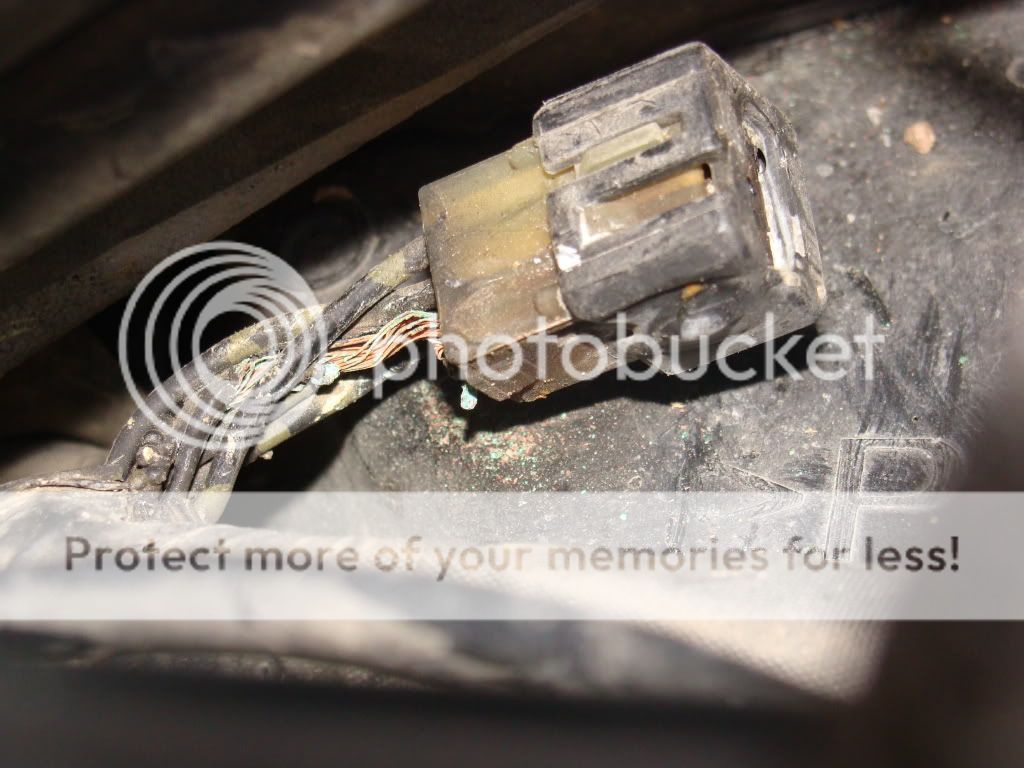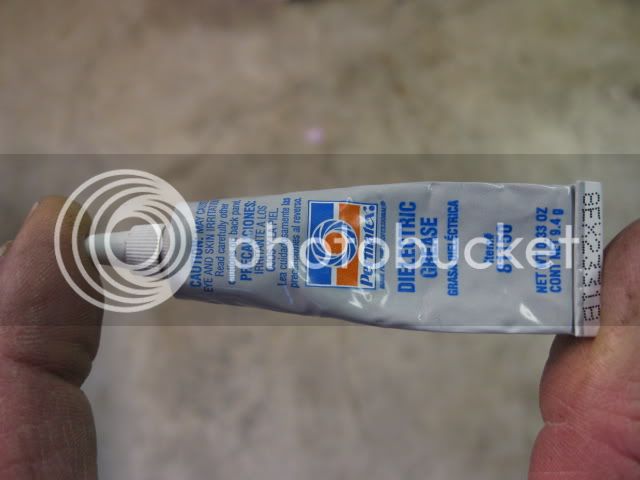I don't understand the compulsion to put a non conducting grease on connector pins that depend on conduction -- dielectric grease. It was never designed for this use and does not do helpful service in this application no matter how compelling the idea is to seal out water. I do applaud AFC 50 which is an anti-corrosion product. Not only does the dielectric grease inhibit electricity flow, when it's really packed into a connector to prevent electrical problems it actually holds in moisture that can't evaporate because it is trapped by the grease. Then in the trapped moisture in the presence of electrical flow enhances corrosion. The fact that you packed a connector with grease and today you don't have a problem doesn't mean that you have a real long term fix.
I use to have the same misconceptions about the non-conductive nature of dielectric grease...and have probably made some of the same comments in the past. One of my friends, an electricl engineer and design specialist in the RF industry, wrote a great article backed-up by emperical testing that helped me get my arms around the nature of these substances. The article discusses dielectric grease and conductive grease properties.
Here's the link to the article. If you care to learn the facts, I invite you to read it and see what you think afterwards.
https://w8ji.com/dielectric_grease_vs_conductive_grease.htm
Interesting article Joe, thanks for posting it.
As many of our old timers regulars know, I've been a big proponent of applying Silicone Dielectric grease in our bike's non sealed connectors in an effort to seal off the bare metal from the air. My thoughts about these spiders are this... when the bike is fresh, the metal in these connectors is bright and have low resistance to electrical current. Given time the brightness goes away due to oxidation forming on the pin's plating. With electrical resistance comes heat. This increasing resistance, in the case of the S4 spider, is sufficient to cause a thermal runaway when the current becomes high enough.
[img=[URL="https://i176.photobucket.com/albums/w194/Spamstermeister/Burnt-1.jpg%5D"]https://i176.photobucket.com/albums/w194/Spamstermeister/Burnt-1.jpg][/URL]
This S4 spider was from Don Carver's bike. That burned out wire carries the combined load of the cooling fans, headlights, tail lights, horns, turn signals, grip heater (on an AE bike), windshield drive, and other associated devices on our Gen.2 platform. It is the metric equivalent of a 16 gage wire (1.0mm).
In the small space within these plastic connectors there is not enough surrounding material to draw off this heat and it results in annealing the affected pin, scorching the plastic, and in many cases convection up the wire melting the insulation. If all the connectors were of the sealed type there would be no issues, however, sealed connectors cost more, and would drive up the purchase price of the bike. Yamaha chose to only use them where the bike's electronics require it, where differences in voltage, are critical in the circuits.
I have had the privilege to install my Grounding Harness on several member's bikes. Several in the San Jose Bay Area, two in the Southern California / San Diego area, and one in Moscow Idaho - a Pacific Northwet bike. I've seen dirty bikes that had clean pins, several darkened connectors, and one pristine bike, and a 4 year old garage queen with a scorched S4 connector. That bike had less than 5,000 miles on it, the top of the engine looked like it was assembled the week before - it was that clean.
It seems that it didn't matter if the bike was rode hard and put away wet, or never saw a raindrop, it is the oxygen in the air that reacts with the pin's surface that causes the corrosion. At the outset I figured that the only way to keep that from happening would be to coat the surface of the connector pins with some type of grease to keep the oxygen from attacking the integrity of the electrical connection. I've had under the hood experience with Permetex dielectric tune up grease for several of my cars. It held up for a long time when coated on spark plug boots, it seemed to be able to take high temperatures and not degrade, and water did not have any effect on it. It even came in small blister packs that I sent with every Grounding Harness sold, along with the Tootse Rolls.
[img=[URL="https://i176.photobucket.com/albums/w194/Spamstermeister/IMG_0400.jpg%5D"]https://i176.photobucket.com/albums/w194/Spamstermeister/IMG_0400.jpg][/URL]
To date I have no evidence, nor heard of any problems with this practice of coating these electrical pins. I've done a lot of electrical farkleing on my two FJRs, and every time I take apart a connector that I treated it comes apart quite easily after releasing it's catch. All the pins are fresh underneath the grease, and I'm sure that when I put them back together, they will get good metal to metal contact with the wiping action inherent in their design.
This evening I installed my Ignition Relay Harness on my new '08
Advanced
Edition bike. This harness has been on my other two bikes. On this bike I decided to try ACF50 instead of the Permetex stuff. It will be interesting to see how it holds up after a few years. Before I put it in place, I pulled the relay out of it's socket so I could clean out all the dielectric grease with electrical contact cleaner. Sure enough, the big tabs on this 70 amp automotive relay were nice and bright under the grease. My practice was to use a Q-tip smeared with dielectric grease to cover both sides of these tabs; well I missed a spot. Sure enough, it had a nice flakey green build up where there was bare copper. This device lives in the engine bay, behind the steering head, under the heat shield. I would consider it a damp location due to the 2 tunnels on either side of the headset directing the elements into this area. It will be interesting to see if the ACF 50 will hold up as well as the dielectric grease did.
Sure was nice reading this article, and having it give credibility to my practice of greasing my connectors.
YMMV
Brodie
























































